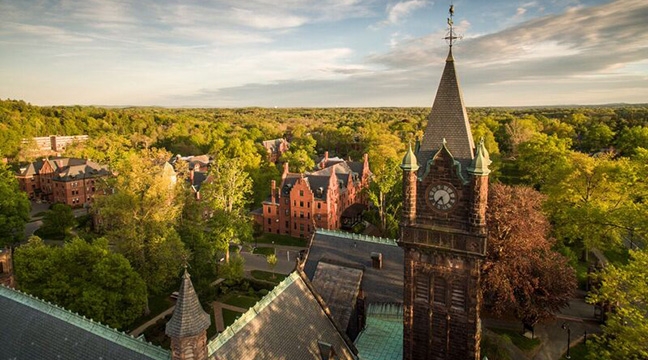
Read: Facilities Master Plan Study Executive Summary
See Also: Proposed Blanchard Community Center
Frequently Asked Questions
- What is the Facilities Master Plan Study?
- Who developed the Facilities Master Plan Study?
- Why does Mount Holyoke need a Facilities Master Plan Study?
- What was the process for developing the study and who was involved?
- What are the key recommendations in this study?
- What are the next steps?
- Where can I send feedback?
What is the Facilities Master Plan Study?
The Facilities Master Plan Study is a report that sets out recommendations to guide decisions related to Mount Holyoke’s physical campus for the next 10 to 15 years. It is important to understand that each recommendation will require further study and community discussion before implementation and that, upon further study, the College may decide not to move forward on certain recommendations due to circumstances at the time or resource constraints.
Who developed the Facilities Master Plan Study?
The Facilities Master Plan Study was developed by Rickes Associates, a leading planning firm in the higher education space that provides colleges and universities with analysis and planning for issues affecting people, programs, and space.
Why does Mount Holyoke need a Facilities Master Plan Study?
Like most colleges, Mount Holyoke faces a number of challenges. These include the changing needs of students, instructional spaces that have not kept pace with pedagogical and technological advances, an aging campus that requires costly maintenance, and the need for improvements related to the American with Disabilities Act (ADA) compliance. Put simply, Mount Holyoke undertook this effort to stay at the forefront of educational excellence in the twenty-first century.
What was the goal of the study?
The study’s goal was to review our current physical space and make recommendations that would help to build community on the campus. The recommendations cover classrooms, residence halls, and community spaces, and attempt to use physical space to encourage community building—among students, students and faculty members, and staff and faculty members. The central tenet of the study is to develop spaces that contribute to community-making. The recommendations were developed within the context of Mount Holyoke’s institutional strategic plan, time-honored traditions, and unique historical attributes.
What was the process for developing the study and who was involved?
This study was guided and approved by the College Planning Committee and overseen by the Facilities Master Plan Working Group. Both the committee and the Working Group included constituents from all areas of the campus and represented all major campus committees. The yearlong process, which aimed to be inclusive, thoughtful, and data-driven, involved the following:
- More than 300 community members and groups (students, faculty, staff, and alums)
- More than 50 individual interviews with on-campus stakeholders
- Student workshops
- Open meetings on campus
- Several meetings with the Board of Trustees
- Nearly 40 consultant days on campus
What are the key recommendations in this study?
This study revealed eight recommendations that will require further review and community discussion:
- Build a Community Center with dining
- Reclaim “opportunity space”
- Revitalize instructional space and create an Academic Commons
- Continue to renovate and update Residence Halls
- Plan to maintain the highest and best use buildings
- Divest costly-to-maintain buildings
- Assess candidates for long-term demolition and replacement of buildings
- Develop plans to fund long-term major renovations of Clapp, the library, and Kendall
What are the next steps?
Next steps will include further study of the first four recommendations. These recommendations and the decisions made related to them will affect the opportunities available within the remaining recommendations. The Mount Holyoke community, outside consultants and the Board of Trustees will provide input for all recommendations, and the Board of Trustees will make the final decisions.
Where can I send feedback?
Please send thoughts, questions, or comments to fmplanning@mtholyoke.edu .


Explore the MHC Social Universe >